#How to develop an app like Instacart
Explore tagged Tumblr posts
Text
2025’s Top Grocery Delivery Apps: Convenience at Your Fingertips

The way we shop for groceries has evolved dramatically, thanks to the rise of grocery delivery apps. These apps have transformed the traditional shopping experience, eliminating long queues and crowded aisles. By 2025, these platforms will offer more than just convenience—they will redefine how we access essentials. Whether you're juggling work, family, or simply prefer online shopping, these apps are designed to simplify your life.
This blog explores the top 10 grocery delivery apps set to dominate 2025, offering faster services, personalized recommendations, and seamless user experiences. We’ll also delve into how businesses can leverage white-label grocery delivery app solutions to stay competitive in this booming market.
Why Grocery Delivery Apps Are the Future
The global online grocery market is projected to exceed $550 billion by 2025. With urban lifestyles becoming busier, people are turning to grocery delivery apps for quick and efficient solutions. These apps provide access to a wide range of products at competitive prices, all from the comfort of home. Advanced technologies like AI, AR, and IoT are enhancing the user experience, with features like real-time tracking, voice search, and personalized suggestions making these apps indispensable.
Top 10 Grocery Delivery Apps to Try in 2025
1. Amazon Fresh
A leader in the space, Amazon Fresh offers a vast product range and reliable same-day delivery for Prime members.
2. Instacart
Known for its convenience, Instacart connects users with local stores like Costco and Publix, making it a favorite among busy families.
3.Walmart Grocery
Combining affordability and efficiency, Walmart’s app offers both delivery and pickup options, with free shipping on orders over $35.
4. Shipt
Shipt stands out with its personalized shopping experience and partnerships with premium retailers like Whole Foods.
5. Blinkit
Formerly Grofers, Blinkit promises delivery in under 10 minutes, catering to users who need essentials quickly.
6. BigBasket
India’s largest grocery app, BigBasket delivers fresh produce and household items in just 90 minutes.
7. Zepto
Zepto’s 10-minute delivery service is perfect for India’s fast-paced urban lifestyle.
8. Swiggy Instamart
A spin-off from Swiggy, this app offers quick and reliable grocery deliveries from its dark stores across major Indian cities.
9. JioMart
Reliance’s JioMart allows users to shop via WhatsApp, offering a wide selection at low prices.
10. DoorDash
Originally a food delivery app, DoorDash now partners with local stores to provide grocery delivery with real-time order tracking.
The Future of Grocery Delivery Apps Across Regions
In the US, Amazon Fresh and Instacart dominate with same-day delivery and retail partnerships. In Canada, Voila by Sobeys and Walmart Grocery are popular for their affordability and convenience. In India, apps like BigBasket and Zepto are thriving due to their ultra-fast delivery services, catering to densely populated urban areas.
Key Features to Look for in a Grocery Delivery App
When choosing a grocery shopping app, consider these essential grocery delivery app features:
- Real-time tracking: Stay updated on your order status.
- Personalized recommendations: Tailored suggestions based on your preferences.
- Multiple payment options: Pay via credit/debit cards, wallets, or cash on delivery.
- User-friendly interface: Ensure a smooth and intuitive shopping experience.
Conclusion
The rise of grocery delivery apps has revolutionized how we shop for essentials, offering unmatched convenience and efficiency. As the industry grows, businesses can invest in white-label grocery delivery app solutions to meet evolving customer demands. With on-demand app development driving innovation, the future of grocery shopping is faster, smarter, and more accessible than ever.
Read More: Top 10 Grocery Delivery Apps Revolutionizing Shopping in 2025
0 notes
Text
The Rise of On-Demand Mobility: A Deep Dive into Pick-up and Drop Services
The way we travel has undergone a dramatic transformation in recent years, thanks to the rise of on-demand mobility services. From ride-hailing apps to food delivery platforms, these services have revolutionized how we get around and access goods and services. This blog will delve into the key aspects of pick-up and drop services, exploring their impact and the future of this rapidly evolving sector.
What are Pick-up and Drop Services?
Simply put, pick-up and drop services involve the transportation of goods or people from one location to another upon request. This can encompass a wide range of services, including:
Ride-hailing: Services like Uber and Ola connect passengers with drivers for on-demand transportation.
Food Delivery: Platforms like Swiggy and Zomato facilitate the delivery of food from restaurants to customers.
Parcel Delivery: Services like FedEx and DHL offer on-demand delivery of packages and documents.
Grocery Delivery: Apps like Instacart and BigBasket allow customers to order groceries online and have them delivered to their doorstep.
E-commerce Logistics: Online retailers rely heavily on pick-up and drop services to fulfill customer orders efficiently.
Key Factors Driving the Growth of Pick-up and Drop Services:
Technological Advancements: The development of smartphone technology, GPS navigation, and robust mobile internet connectivity has played a crucial role in enabling these services.
Changing Consumer Behavior: Consumers are increasingly demanding convenience and on-demand access to goods and services.
Urbanization: The rapid growth of urban populations has led to increased traffic congestion, making on-demand mobility services a more attractive option.
Economic Growth: Rising disposable incomes have fueled the demand for convenient and efficient transportation and delivery services.
Impact of Pick-up and Drop Services:
Enhanced Convenience: These services offer unprecedented convenience and flexibility for both consumers and businesses.
Economic Opportunities: They have created new job opportunities for drivers, delivery personnel, and other gig workers.
Increased Accessibility: They improve accessibility for people with disabilities, the elderly, and those living in remote areas.
Traffic Congestion: In some cases, the proliferation of these services can contribute to increased traffic congestion in urban areas.
Environmental Impact: The reliance on personal vehicles for deliveries can have a negative impact on the environment.
The Future of Pick-up and Drop Services:
Autonomous Vehicles: The integration of autonomous vehicles is expected to revolutionize the transportation sector, making ride-hailing and delivery services even more efficient and cost-effective.
Drone Delivery: Drone technology holds the potential to transform last-mile delivery, offering faster and more efficient delivery options.
Sustainability: The industry is focusing on developing more sustainable solutions, such as electric vehicles and eco-friendly packaging.
Hyperlocal Delivery: The focus is shifting towards hyperlocal delivery, with a focus on faster delivery times and customized services.
Integration with Other Services: Pick-up and drop services are increasingly being integrated with other services, such as e-commerce, travel, and entertainment.
Conclusion:
Pick-up and drop services have become an integral part of our daily lives, transforming the way we move and access goods and services. While challenges remain, such as traffic congestion and environmental impact, the continued innovation and development within this sector promise a future of even greater convenience, efficiency, and sustainability.
#self drive cars in kochi#pick up and drop services#self drive car trivandrum#luxury car rental for wedding
0 notes
Text
Key Challenges in Grocery Delivery App Development and How to Overcome Them
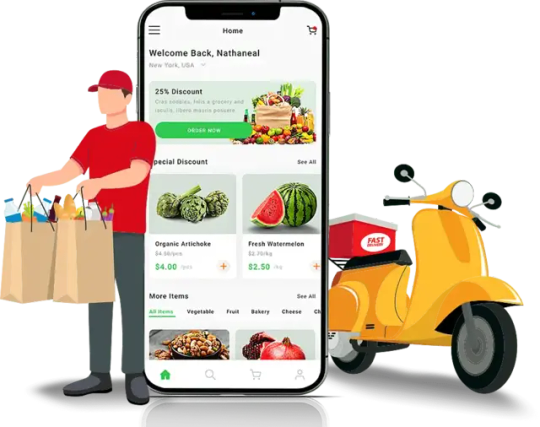
If you're a restaurant owner, small business operator, or enterprise leader considering diving into the world of grocery delivery, you’ve probably thought about grocery delivery app development. I’ve been there—excited about the possibilities, yet a little overwhelmed by the challenges that can pop up. Developing a grocery delivery app isn’t just about building a platform; it’s about creating an experience that your customers will love. Let me share some common hurdles and how to tackle them.
Challenge 1: Understanding Customer Needs
One of the first challenges I faced in on-demand grocery delivery app development was figuring out what customers truly wanted. Grocery shopping habits vary, and creating a one-size-fits-all solution just doesn’t cut it. Customers demand convenience, quick deliveries, and a seamless interface.
How to Overcome It: Start with research. I can’t emphasize this enough! Survey your customers, analyze competitors, and look at industry trends. Then, design features that address these needs—like real-time tracking, multiple payment options, and personalized recommendations.
Challenge 2: Building a User-Friendly App
I’ve seen apps with overly complicated interfaces that drive users away. Your grocery delivery app needs to be intuitive and simple to navigate, whether your customers are tech-savvy millennials or seniors looking for convenience.
How to Overcome It: Invest in a clean and functional design. Work closely with your developers to create an interface that’s not just pretty but practical. If you’re considering a white-label grocery delivery app development solution, ensure it offers customization options to match your branding and user expectations.
Challenge 3: Managing Inventory in Real Time
Let’s be real—inventory management can be a nightmare, especially when you’re juggling perishable items. Outdated stock data can lead to frustrated customers and missed sales opportunities.
How to Overcome It: Use robust inventory management systems integrated into your app. Features like real-time updates, automatic stock alerts, and synchronization with your backend systems can make a world of difference. Many white-label grocery delivery app development solutions come with these capabilities built-in, saving you time and effort.
Challenge 4: Ensuring Efficient Delivery Logistics
Timely deliveries are the backbone of any on-demand grocery delivery app development project. If deliveries are slow or inconsistent, customers will look elsewhere.
How to Overcome It: Invest in route optimization tools and hire reliable delivery personnel. Your app should offer real-time tracking for customers and drivers alike. Working with an experienced development team or opting for a white-label solution can streamline this process significantly.
Challenge 5: Competing with Big Players
Competing against giants like Instacart or Amazon Fresh can feel intimidating. They’ve got the budget, the team, and the brand recognition—but don’t let that stop you!
How to Overcome It: Focus on your unique value proposition. Is it locally sourced groceries? Same-day delivery? Affordable pricing? Highlight what sets you apart. Plus, building a white-label grocery delivery app can give you access to enterprise-grade features without the hefty price tag.
Final Thoughts
Building a grocery delivery app is no small feat, but the rewards are worth it. By addressing these challenges head-on, you’ll create a platform that not only meets your customers’ needs but also helps your business thrive in the competitive world of grocery delivery app development.
Remember, whether you’re a small business, restaurant, or enterprise, there’s a solution out there that’s perfect for you. If you’re unsure where to start, consider exploring white-label grocery delivery app development options—they’re cost-effective, customizable, and ready to deploy.
If I’ve learned anything, it’s that success in the on-demand grocery delivery app development space comes from persistence, planning, and a deep understanding of your audience. You’ve got this! 🚀
0 notes
Text
Unlocking the Future of Grocery Shopping with Delivery Apps
As an entrepreneur or startup founder, you're likely always on the lookout for innovative ways to tap into evolving markets and consumer behaviors. The grocery retail landscape is undergoing a transformation, largely driven by the rise of delivery apps. These apps are not just a fleeting trend; they are fundamentally altering how consumers shop for groceries and how businesses operate. Let’s dive into how this change is unfolding and what it means for us as business leaders.
The Surge in Grocery Delivery Apps
Grocery delivery apps have seen an unprecedented surge in usage, particularly in the past few years. According to a report by BusinessLine, the grocery delivery app market is expected to grow by 22.7% annually, reaching a valuation of $631.84 billion by 2027. This explosive growth is a clear indicator that consumers are increasingly embracing the convenience of having their groceries delivered to their doorstep.
From my perspective, this shift is not just about convenience. It’s about meeting the modern consumer where they are: on their smartphones. As a mobile app development company in the USA, we've seen firsthand how crucial it is to develop user-friendly, efficient, and reliable apps. The demand for ready-made grocery delivery app is skyrocketing, as businesses seek quick and efficient ways to enter this booming market.
Consumer Behavior and Expectations
One of the most significant changes we've observed is in consumer behavior. People are now more inclined to use grocery delivery apps for their weekly shopping. A survey by Techugo revealed that 60% of consumers have downloaded at least one grocery delivery app, and 35% of them use it regularly for their grocery needs.
This shift is driven by several factors:
Convenience: Busy lifestyles leave little time for traditional grocery shopping. Delivery apps save time and effort.
Safety: Especially post-pandemic, consumers prefer the safety of contactless delivery.
Personalization: Apps can offer personalized recommendations based on past purchases and preferences.
Variety: Access to a wide range of products that might not be available in local stores.
For entrepreneurs, understanding these behavioral shifts is key to developing an on-demand grocery app that truly resonates with users. It's not just about creating an app; it's about creating an experience that aligns with these new expectations.
The Impact on Traditional Retailers
Traditional grocery retailers are feeling the pressure to adapt or risk becoming obsolete. Many have partnered with or developed their own delivery apps to stay competitive. According to LinkedIn, 50% of traditional grocery stores now offer delivery services, either through their apps or third-party platforms like Instacart and DoorDash.
This adaptation comes with its own set of challenges and opportunities:
Operational Changes: Retailers must revamp their supply chains and inventory management systems to cater to online orders.
Customer Experience: Maintaining the quality of fresh produce during delivery is a significant concern.
Competitive Pricing: Delivery apps often offer discounts and promotions that traditional stores must match.
However, for startups and new entrants, this evolution opens up opportunities to fill gaps left by traditional retailers. For instance, focusing on niche markets or specialized products can help differentiate a new on-demand grocery app from established players.
The Role of Technology
Technology is the backbone of this transformation. From robust backend systems to intuitive user interfaces, every aspect of a grocery delivery app must be meticulously crafted. As a mobile app development company in USA, we've seen a growing demand for sophisticated solutions that include features like:
Real-time Inventory Management: Ensuring that the products displayed are actually available.
Advanced Search and Filtering: Helping users find exactly what they need quickly.
Secure Payment Gateways: Providing multiple payment options and ensuring transaction security.
AI and Machine Learning: For personalized recommendations and efficient route planning for deliveries.
Investing in these technologies is crucial for any entrepreneur looking to develop a ready-made grocery delivery app that stands out in a crowded market.
Case Studies: Success Stories
Several companies have successfully leveraged grocery delivery apps to transform their business models. Let's look at a few notable examples:
Instacart: Starting as a small startup, Instacart has become a dominant player in the grocery delivery market. By partnering with major retailers and focusing on customer satisfaction, they have carved out a significant market share.
Walmart: By integrating their grocery delivery service with their existing infrastructure, Walmart has managed to offer a seamless shopping experience that combines online convenience with their vast inventory.
FreshDirect: This company focuses on delivering high-quality, fresh produce and has built a loyal customer base by ensuring the freshness and quality of their deliveries.
These success stories underline the importance of understanding market needs and leveraging technology to meet them effectively.
Challenges and Considerations
While the opportunities are vast, developing a successful grocery delivery app comes with its own set of challenges:
Logistics: Efficiently managing the logistics of delivery, especially for perishable goods, is complex.
Customer Retention: Building a loyal customer base in a market with many competitors requires consistent quality and innovation.
Regulatory Compliance: Navigating the regulatory landscape, including food safety and delivery regulations, is essential.
For entrepreneurs, these challenges can be mitigated by partnering with experienced developers and focusing on creating a seamless user experience.
The Future of Grocery Retail
Looking ahead, the on-demand grocery app development landscape will continue to evolve. Trends such as drone deliveries, automated warehouses, and enhanced AI capabilities will further reshape the market. For businesses, staying ahead of these trends and continuously innovating will be key to long-term success.
As an entrepreneur, this is an exciting time to be involved in the grocery delivery space. By understanding the current landscape, leveraging the right technologies, and addressing market needs, there is significant potential to build a successful and impactful business.
Conclusion
The rise of grocery delivery apps is more than just a trend; it's a paradigm shift in how we shop for essentials. For entrepreneurs and startups, this presents a unique opportunity to tap into a growing market with innovative solutions. By focusing on user needs, leveraging cutting-edge technology, and staying ahead of industry trends, you can carve out a niche in this dynamic landscape.
So, whether you're looking to develop a new on-demand grocery app or enhance an existing one, remember that success lies in understanding the market, embracing technology, and always putting the customer first. As we move forward, the grocery retail landscape will continue to evolve, and those who adapt will thrive in this new era of convenience and efficiency.
#hire developers#hire app developer#mobile app development#ios app development#hire mobile app developers#android app development#grocery app development#grocery#white label grocery app#grocery delivery#grocery online#grocery shopping#grocery store
0 notes
Text
Here's How You build an Instacart Clone app in 5 Easy Steps
Many people are motivated to start their online grocery delivery businesses by large and successful players like Instacart. Without a doubt, Instacart reached new heights and shattered all earnings and success records. Many people have been motivated to create similar apps by Instacart's popularity.
The working model of Instacart is relatively straightforward and fluid, ensuring better and faster delivery to the customers. If you want to create an app similar to Instacart, make your grocery delivery service adhere to a straightforward but efficient operational paradigm.
The price of developing an app relies on several variables. It includes the platform you choose—Android or iOS—the kind of business model you select, the length of the app development process, etc.
With the newest technology and appealing features, AppsRhino can assist you in creating a unique app similar to Instacart, making you the new favorite among health-conscious consumers. Could you make contact with us to begin?
While creating an app similar to Instacart can be challenging, AppsRhino can ease your workload. We provide you with the most excellent clone development guide with the help of our experienced team. We hope this article provided valuable information regarding the Instacart app and helped you learn valuable lessons from the world's largest grocery delivery service.
0 notes
Text
From Idea to Reality: Developing an App Like Instacart
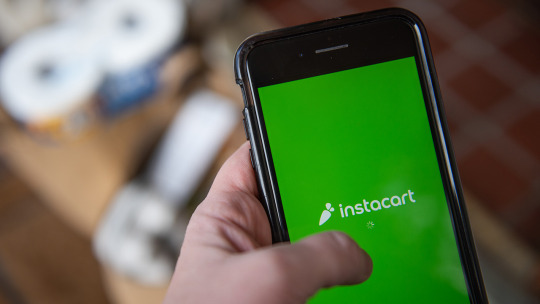
Embark on the journey of creating an app like Instacart by understanding its core features and development process. Learn how to leverage real-time order tracking, intuitive UI/UX design, and robust backend logistics. Discover key strategies for implementing secure payment gateways and efficient customer support systems. Follow this guide to turn your concept into a successful grocery delivery app like Instacart, meeting market demands effectively.
0 notes
Text
0 notes
Text
How to Build an App Like Instacart? Process and Key Features

Building an app like Instacart involves several steps: market research, defining core features, UI/UX design, choosing the right technology stack, development, and testing. Key features include user profiles, product catalogs, search and filters, real-time tracking, payment integration, and customer support. Focus on scalability, security, and a seamless user experience to ensure success in the competitive grocery delivery market.
0 notes
Text
Know How To Develop a Grocery Delivery App like Instacart
Build your own Instacart-like app with our guide. start turning your vision into reality with us. A grocery delivery app development company specializes in creating customized applications that enable users to order groceries online and have them delivered to their doorstep.
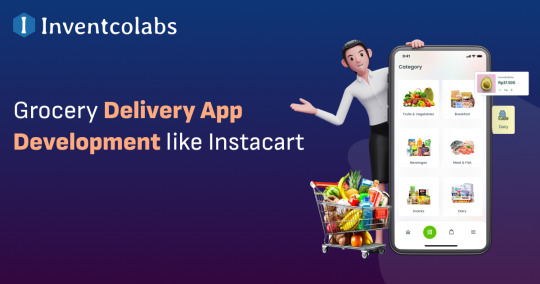
#grocery delivery#appdevelopmentcost#software development#grocerydeliveryappdevelopment#techinnovation#CustomerConvenience#TechRevolution
0 notes
Text
How do you make a grocery app like Instacart?
People recently prefer using delivery applications to look for nearly anything since they are more convenient and simple to utilize. With the ascent of on request application development, grocery delivery applications, for example, Instacart have become progressively well known. The application permits clients to order groceries for delivery from their nearby stores with a couple of taps. In this blog post, we will discuss creating a grocery delivery app with no code and what features to include to make a competent app.
What is Instacart?
The application permits clients to shop from confided in retailers and have their groceries delivered that very day to their home addresses. Shopping at Instacart involves buying many household items, such as households, fresh, healthy food, and more. The service is available in excess of 5000 urban areas in the US and Canada, and clients can shop by browsing the website or the mobile application. While orders are being delivered, clients can chat with the retailers, which is useful. Customers, who handle orders, can inform clients if any items are out of stock, and clients can make request updates.
Also read: Cost to Develop a Food Delivery App Like Deliveroo
Clients like utilizing Instacart on the grounds that they get advantages like coupons and deals to save money on groceries. Furthermore, Instacart is known for its astounding client service; the company makes a special effort to guarantee consumer satisfaction when dealing with substitutions, shopper mistakes and promoting tipping.
But How Do They Make Money?
Instacart makes in cash through delivery charges, membership expenses, and publicizing. Clients pay $3.99 to $7.99 for delivery, contingent upon the size of their order. Instacart offers a subscription service called Instacart+, where subscribers get free delivery on orders over $35 or per retailer. The company procures income from publicizing showed on the application and website. Furthermore, Instacart gathers cash from commissions, calculated as a percentage of the total order amount.
Must-have Features in a Grocery Delivery App
User Registration and Login
Clients ought to have the option to register with the application utilizing their email address, mobile number, or virtual entertainment account. When registered, the client can sign in and access their account. The component eliminates out the disappointment of reemerging data each time the clients utilize the service. Also, registration will enable the application to save their inclinations for later ideas.
Payment Options
Multiple secure payment choices, like debit/credit cards, computerized wallets, and money, guarantee that the application takes special care of various preferences. For more convenience, clients ought to have the option to save their payment details for future orders.
Search and Filtering
A strong web search engine with a separating highlight enables clients to find products quickly. Channels permit clients to limit their search results and channel items by various rules, like value, brand, and category.
An E-Store
It's a given that a grocery delivery application requires e-stores where clients can see items and add them to their cart. A nitty gritty item description, pictures, evaluations, and surveys make it simple for clients to choose which items to purchase. Items should be very much sorted and coordinated for a better browsing experience. The application ought to have a top choices segment where clients can add items to records for future orders.
Also read: Food delivery app development cost in Deliveroo
Multiple Stores
The application ought to permit clients to shop from various stores and think about costs, delivery charges, and different details. Clients ought to have the option to see every one of the available stores in their area, and the application could likewise enable them to switch between stores while ordering.
Map Tracking
A guide following component permits clients to follow their orders in real-time to see how far the delivery is and the way in which long it will take to contact them. Moreover, the application ought to send warnings to clients when the order is out for delivery and when it has been delivered.
Loyalty Program
A loyalty program is an incredible method for compensating clients for their dependability and keep them returning to the application. A steadfastness program permits clients to earn points for shopping with the application and redeem them for limits or free items. On top of that, Customers should be able to refer friends and family for rewards.
Engagement Campaigns
Engagement campaigns are a crucial part of any business, and a grocery delivery app is no exception. They keep clients engaged with and informed about upcoming events, limits, and different offers.
Also read: Cost to develop an app like Deliveroo
Rating and Reviews
Clients value having the option to leave feedback about the application, the items they bought, and the delivery service by rating and checking on their experience. As well as supporting client trust in the application, it benefits the company as it can figure out which retailers are bad for business. Reviews should be visible to everyone using the app.
Push Notifications
Push notifications are essential to inform customers of order delivery status, offers, and updates. This would keep customers informed and engaged. We suggest timing the alerts and making them applicable to clients' interests. Moreover, clients like on the off chance that they can quit getting message pop-ups in the event that they never again need them.

0 notes
Text

Building a Successful Grocery Delivery App: A Complete Guide for 2024
🛒 Breaking into the Grocery Delivery Market? 🚚 Discover how to build a thriving app like Instacart with our comprehensive guide for 2024. Learn about essential features, costs, and tech stacks for on-demand grocery app development. Stay ahead of trends like AI integration, eco-friendly options, and smart device compatibility to craft a winning strategy. read more: https://on-demand-app.com/grocery-app-development-4-takeaways-for-a-successful
0 notes
Text
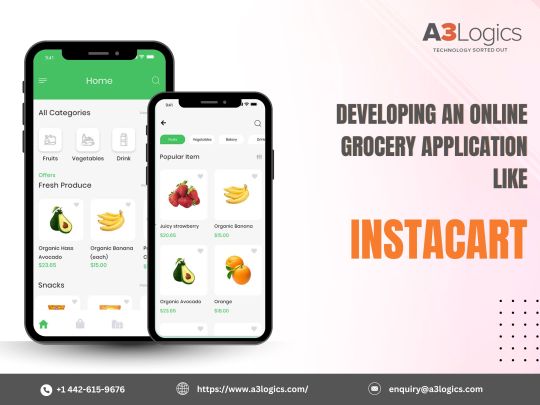
A Comprehensive Guide to Develop Instacart-Like Apps
Explore the ins and outs of Instacart-like app development. Learn how to implement key features like real-time tracking and secure payments. Our comprehensive guide provides valuable insights and practical tips for every stage of development. Partner with our expert mobile app development companies in USA to bring your grocery delivery app idea to life.
0 notes
Text
How to Develop Best Grocery Delivery App Like Instacart?
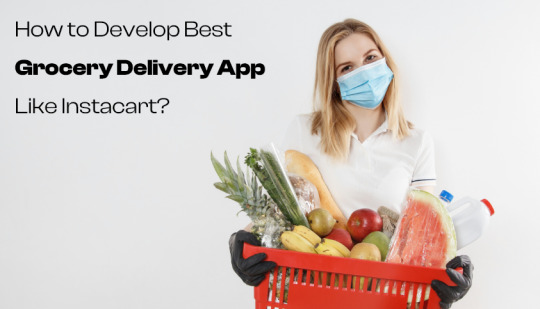
In today's fast-paced world, convenience is vital, and grocery delivery apps like Instacart have revolutionized how we shop for groceries. With a few simple taps on your phone, you can have your favorite groceries delivered right to your doorstep, saving you time and hassle. But have you ever wondered how to develop the best grocery delivery app like Instacart? If you're an entrepreneur looking to create your grocery delivery app, you're in the right place. Building a successful grocery delivery app requires careful planning, strategy, and a solid understanding of the target market. This article provides a comprehensive guide on how to develop a top-notch grocery delivery app like Instacart.
Market Analysis of Grocery Delivery Apps
Before diving into the development process, conducting a thorough market analysis of existing grocery delivery apps is essential. Analyzing the competition will help you identify gaps in the market and understand what features and functionalities are in high demand.
Research popular grocery delivery apps like Instacart, Amazon Fresh, and Walmart Grocery. Pay attention to customer reviews and feedback to gain insights into what users love and what can be improved.
Features of Successful Grocery Delivery Apps
To create a successful grocery delivery app, you need to offer features that cater to the needs and expectations of your target audience. Here are some essential features to consider:
User Registration and Profiles
It allows users to easily create accounts and manage their personal information, delivery addresses, and payment methods.
Product Catalog
Build a comprehensive catalog of grocery items, including descriptions, images, and pricing. Implement search and filter functionalities to help users find specific products quickly.
Real-Time Inventory Management
Integrate with store inventory systems to ensure accurate product availability information. Displaying real-time stock levels will prevent users from ordering items out of stock.
Custom Shopping Lists
Enable users to create and save shopping lists for easy reordering. Incorporate features like smart suggestions and voice recognition for a convenient shopping experience.
Delivery Scheduling
Allow users to choose preferred delivery slots based on availability. Implement a notification system to keep users updated on the status of their deliveries.
In-App Chat/Support
Provide a seamless communication channel between users, delivery drivers, and customer support. This feature ensures timely assistance and issue resolution.
Ratings and Reviews
Enable users to rate and review products, delivery drivers, and overall service quality. Positive reviews can boost user confidence and attract new customers.
Remember, these are just a few examples of features to include. Consider conducting user surveys or focus groups to gather feedback and understand what additional functionalities would enhance the user experience.
Choosing the Right Technology Stack for Your App Development
Selecting the right technology stack is crucial for the success of your Uber grocery delivery app. Consider the following components.
Mobile App Development
Choose a platform (iOS, Android, or both) based on your target audience's preferences. Opt for native app development or cross-platform frameworks like React Native or Flutter for cost-effective development.
Backend Development
Consider technologies like Node.js, Ruby on Rails, or Django for a robust and scalable backend. These frameworks provide efficient server-side processing and data management capabilities.
Database Management
Select a reliable database management system, such as MongoDB, PostgreSQL, or MySQL, to efficiently handle large amounts of data.
Cloud Infrastructure
Utilize cloud platforms like AWS, Google Cloud, or Azure for secure data storage, real-time updates, and easy scalability.
API Integrations
Integrate with third-party APIs for payment gateways, geolocation, and SMS notifications. It enables seamless communication and enhances the overall functionality of your app.
Consult with experienced developers or a technology consultant to determine the most suitable technology stack for your requirements.
Designing a User-Friendly Interface for Your App
A user-friendly and visually appealing interface is critical for engaging users and keeping them returning to your app. Follow these design principles to create an intuitive and pleasing user interface:
Keep it Simple
Avoid clutter using clean layouts, minimalistic design elements, and clear navigation menus. Simplify the ordering process and minimize the steps required to complete a purchase.
Intuitive Navigation
Design intuitive navigation flows that guide users seamlessly through the app. Utilize clear icons, labels, and breadcrumbs to help users understand where they are in the app and how to navigate to different sections.
Visual Hierarchy
Highlight essential elements and information using visual cues such as color, size, and contrast. Use whitespace effectively to improve readability and create a sense of visual balance.
Responsiveness
Ensure your app is responsive across different devices and screen sizes. Optimize layouts and image sizes to provide a consistent and enjoyable user experience.
Accessibility
Make your app accessible to users with disabilities by implementing features like voice control, text-to-speech, and adjustable font sizes. Consider colorblindness and other visual impairments when choosing color schemes.
By prioritizing user experience and following design best practices, you can create an app that users will find intuitive and enjoyable.
Building a Robust Backend for Seamless Operations
The success of your on-demand grocery delivery solution relies heavily on a robust and efficient backend system. Here are some key components to consider:
User Management
Implement secure authentication and authorization systems to protect user data and enable personalized experiences.
Order Management
Develop an order management system that efficiently handles order processing, tracking, and fulfillment. Integrate with delivery partners or build your fleet management system for smooth, timely delivery.
Inventory Management
Ensure real-time inventory updates by integrating with store systems or implementing your inventory management system. It will prevent instances of out-of-stock items and enable accurate order fulfillment.
Analytics and Reporting
Incorporate analytics tools to track user behavior, order patterns, and app performance. Utilize this data to make informed business decisions and optimize your app for improved user satisfaction.
Scalability and Performance
Build your backend infrastructure to handle high volumes of concurrent users and ensure a seamless experience even during peak times. Utilize caching mechanisms, load balancing, and other performance optimization techniques.
Collaborate with experienced backend developers and infrastructure experts to ensure a robust and scalable backend system that can handle the demands of your app.
Integrating Payment Gateways and Security Features
Seamless and secure payment processing is critical to any grocery delivery app. Integrate reliable and widely used payment gateways like Stripe, PayPal, or Braintree to provide users with multiple payment options and a secure checkout process.
Implement robust security measures to protect user data and prevent unauthorized access. Utilize encryption technologies, secure connections (HTTPS), and adhere to industry-standard security practices to build user trust and safeguard sensitive information.
Marketing and Promoting Your App for Maximum Reach
Effective marketing and promotion are crucial to success in your grocery delivery app. Here are some strategies to consider:
Social Media Marketing
Utilize popular social media platforms like Facebook, Instagram, and Twitter to create engaging content, run targeted ads, and build a community around your app.
App Store Optimization (ASO)
Optimize your app store listing using relevant keywords, compelling descriptions, and eye-catching visuals. Encourage positive reviews and ratings to improve your app's visibility.
Influencer Partnerships
Collaborate with influencers, bloggers, and vloggers in the food and lifestyle niche to promote your app. Their recommendations can significantly increase your app's visibility and attract new users.
Referral Programs
Implement referral programs to incentivize existing users to refer their friends and family. Offer discounts, exclusive promotions, or rewards for successful referrals.
Local Partnerships
Forge partners with local grocery stores, restaurants, and food brands to offer exclusive deals and discounts. It will help you tap into their existing customer base and drive app downloads.
Content Marketing
Create valuable and informative content about grocery shopping, healthy eating, and food trends. Publish blog posts, videos, and infographics to establish your app as an authority in the industry.
Remember to track and analyze the effectiveness of your marketing efforts continuously. Adjust your strategies based on user feedback, market trends, and competitor analysis to maximize your app's reach and user acquisition.
Conclusion
Developing a grocery delivery app like Instacart Clone requires careful planning, attention to detail, and a commitment to providing a seamless user experience. Following the critical steps outlined in this article, you can create a top-notch grocery delivery app that stands out in the competitive market and attracts a loyal customer base. Test your app thoroughly before launching and implement effective marketing strategies to ensure maximum reach and user engagement.
#on demand grocery delivery app#grocery delivery app#grocery delivery app solution#on demand grocery delivery app solution#online grocery delivery app#uber grocery app development solution#instacart clone script#instacart clone script solution#uber grocery delivery app#instacart clone
0 notes
Text
Unlock Your Digital Fortune: The Complete Guide to Online Income Generation for Generation Z
Gen Zers have countless options to make money online in 2024. In the digital age by utilizing their creativity, abilities, and tech-savvy disposition. Here's a concise guide on how to make money online that is geared especially for Gen Z:

Content Creation: Gen Z is quite good at making interesting content, whether it's for YouTube vlogs, Instagram stories, or TikTok videos. Use your individuality and inventiveness to gain followers on social media. Make money off of your material as your following expands by selling items, promoting brands, and arranging affiliate deals.
Freelancing Platforms: Gen Z is renowned for having a wide range of skills, including video editing, coding, and graphic design. Investigate freelance marketplaces such as Fiverr, Upwork, and PeoplePerHour to market your services to clients around the world. Use your digital expertise to land jobs managing social media, developing websites, or creating content.

Dropshipping and E-commerce: With a keen eye for trends and aesthetics, Gen Z can thrive in the world of e-commerce. Start your online store on platforms like Shopify or Etsy, selling everything from trendy clothing to custom-made crafts. Alternatively, try dropshipping to sell products without inventory, focusing on niche markets that resonate with your peers.
Social Media Management: Gen Z has the potential to succeed in the e-commerce industry if they have a good sense of style and trends. Launch an online store selling everything from trendy clothes to handcrafted items on sites like Shopify or Etsy. As an alternative, consider dropshipping and concentrate on niche markets that appeal to your peers to sell goods without inventory.
Online Tutoring and Skill Sharing: Gen Z has a lot to share, whether it's how to master Photoshop or ace maths tests. Provide tutoring services online on sites like Chegg Tutors or make courses on Udemy to impart knowledge on subjects you're enthusiastic about. In the field of digital learning, there is a need for your knowledge in both academic areas and specialized interests.
Gig Economy Apps: Utilise apps like DoorDash, Instacart, and Uber to embrace the gig economy. These platforms provide Gen Zers who want to work for themselves with freedom and fast income, regardless of whether they like driving, delivery, or odd tasks.
Virtual Events and Performances: Gen Z has the opportunity to present their skills to a worldwide audience thanks to the growth of virtual events and live streaming platforms. Whether you're teaching online fitness courses, holding virtual concerts, or providing lessons for digital art, make the most of sites like Twitch, Patreon, or Zoom to make money off of your expertise and engage viewers.
Online Surveys and Market Research: In your spare time, supplement your income by taking part in market research studies and online surveys. An easy and convenient method to earn money online is to share your opinions about products and services on websites like Swagbucks and Survey Junkie, which give prizes for doing so.
In conclusion, Gen Z possesses the entrepreneurial spirit and digital fluency necessary to succeed in the online market. If Gen Zers put their creativity, aptitude, and passion to use, they may start successful Internet businesses. As a result, they will have greater chances to prosper financially and in the digital world.
1 note
·
View note
Text
How an Instacart Clone App Transforms Your Supermarket Chain
In today’s digital landscape, digitizing your operations is paramount, and an online supermarket app stands out as a transformative solution to elevate your business. Dive into the realm of possibilities with Shopurgrocery’s Instacart Clone App, specifically designed to propel your supermarket into the future. Let’s explore the potential in this blog.
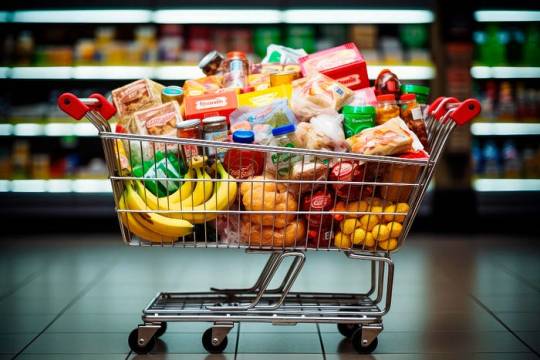
Transforming Your Supermarket Chain
Efficient Launch with Clone Apps
Before investing in a developer for your online grocery mobile app, consider the efficiency of clone applications. Opting for Shopurgrocery’s Instacart Clone Script allows you to launch your supermarket mobile app swiftly and cost-effectively compared to developing a new one from scratch.
Mirroring Features for Seamless Operations
This clone app replicates the operational features and user experience of leading platforms, enabling you to effortlessly list and sell various product categories within a single interface. Enhance your supermarket chain’s sales by adding countless products and detailed descriptions through the Instacart Clone Script. But first, let’s understand the dynamics of a supermarket chain.
Maximizing Efficiency
A Streamlined Workflow
A supermarket chain involves managing multiple branches under one umbrella, offering diverse products and brands to customers. With a network of supermarkets, ensuring fast doorstep delivery becomes a reality.
Efficient Order Fulfillment
The Instacart Clone facilitates an efficient workflow, starting with online ordering. Customers can explore and add items to their virtual cart, choosing from options like store pick-up, doorstep delivery, or scheduled delivery during checkout.
Mediating Sales with Technology
Upon order placement, personal shoppers receive notifications, collecting and delivering orders from your supermarket to customers. Acting as a mediator between the delivery personnel, your supermarket, and customers, the Instacart Clone app establishes an online network to amplify sales and attract more online customers.
Strategies to Maximize Revenue
Customer-Centric Marketing
Implementing effective marketing and selling strategies is crucial to maximizing revenue through the Instacart Clone app. Understand your customers’ preferences through in-app surveys and execute the following strategies:
Seasonal Campaigns: Capitalize on special occasions with attractive offers highlighted through in-app ad banners.
Value Creation: Provide extended care by offering recipes and cooking classes to enhance your brand’s value.
Showcasing Strengths: Highlight partnerships with top brands through the Instacart Clone app to build trust and credibility.
Free Services: Attract customers by offering additional benefits for free, effectively promoted through the app.
In-app Advertisement: Utilize a dedicated page within the app for weekly offers and ads, showcasing the best deals on discounted products.
Customization for Maximum Revenue
Tailored Solutions for Your Business
Opt for Shopurgrocery’s customized Instacart Clone Script to tailor the mobile application to your specific needs. This script allows you to include or exclude features and edit the app’s UI, providing a unique and personalized experience for your supermarket business.
Ready to Elevate Your Supermarket Business?
Request a Free Demo Now!
Seize the Future
Elevate your dream of transforming your grocery shop into a supermarket by embracing technological advancements. A mobile app for your supermarket is a transformative step forward, and the Instacart Clone app is your ticket to launching the best grocery app script effortlessly. Capture the attention of customers with Shopurgrocery’s Instacart Clone app, a proven solution empowering entrepreneurs like you to thrive in the online supermarket realm.
#grocery app#groceryshopping#grocery delivery#grocery store#grocery delivery app#grocery delivery industry#grocerydeliveryscript#grocery delivery business#online grocery delivery#shopurgrocery
0 notes
Text
How to Build On-Demand Grocery App Like Instacart
Grocery Stores are betting on Grocery Delivery Apps all over the globe. Grocery delivery apps like Flipp, Instacart, Mealboard, Postmates, Bigoven, Rapi, etc are a few names that are very popular in the on-demand grocery delivery world.
With these amazingly easy-to-use online grocery shopping apps, you can shop and get all your items delivered to your doorstep without stepping out. The main focus of these grocery delivery apps is on speed, simplicity, and user-friendly interface.
People using on-demand grocery delivery apps want to ensure their transactions are safe and secure at all times. Supporting security protocols can make you pass on added costs to the services you offer to your customers.
Software for our grocery delivery app needs to be designed and developed in a manner such that it can coordinate with the business model and follow the organization’s unique processes.
An easy interaction of customers with products and services is what is the key highlight of these grocery delivery apps, and that too, instantly, when needed. It would be interesting to see how this arena blossoms and what more advancements are observed in the time to come.
0 notes